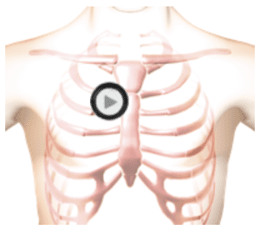First Heart Sound plus Aortic Ejection Click 104 Auscultation Practice
First Heart Sound plus Aortic Ejection Click 104
Research studies have demonstrated that listening to a heart sound for 2-3 minutes can help students master auscultation.
For textual descriptions, waveforms and heart animations, please use our courses on this website.


Listening Tips
S1:Systole: high-pitched sound, early in systole, short duration
S2:
Diastole: